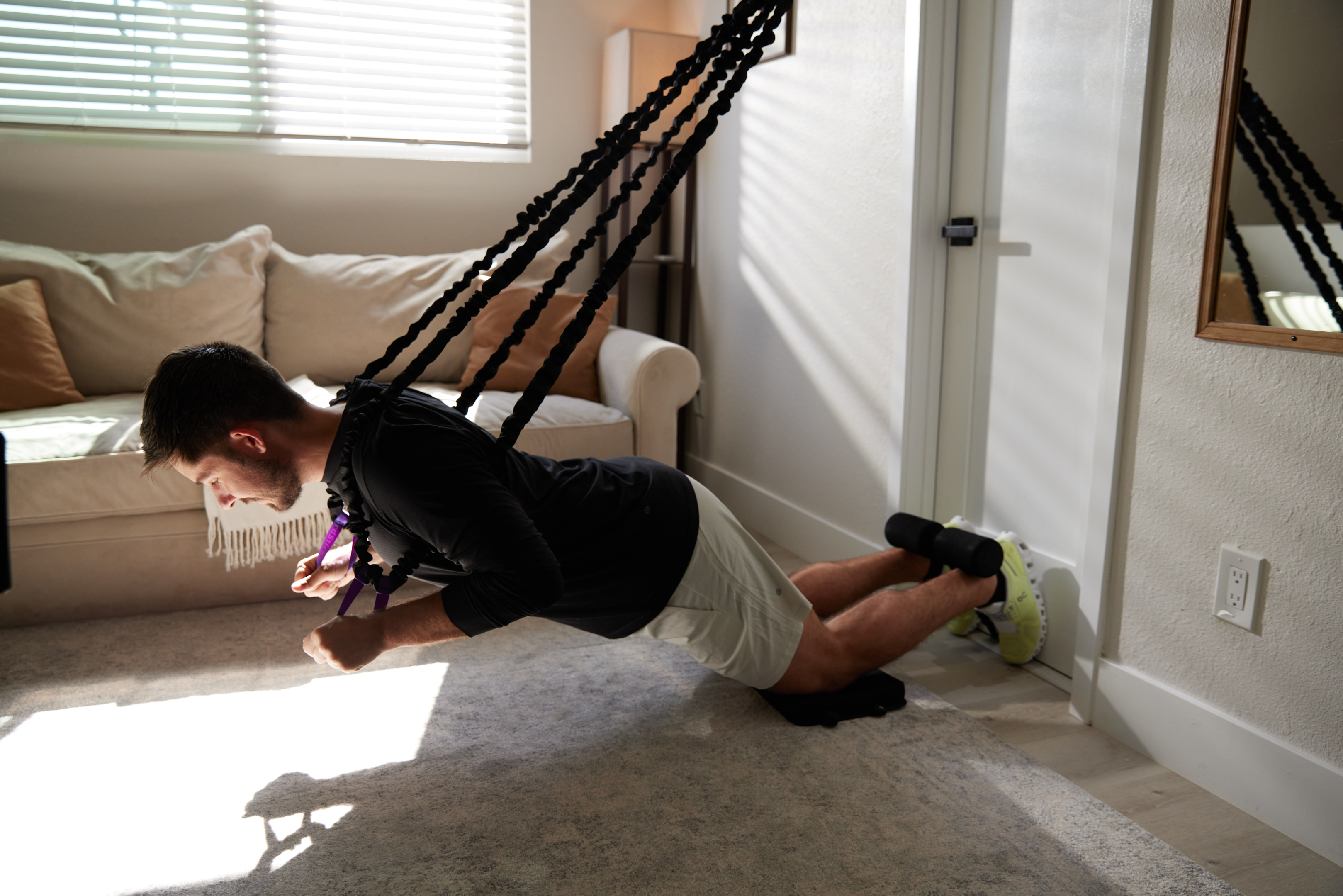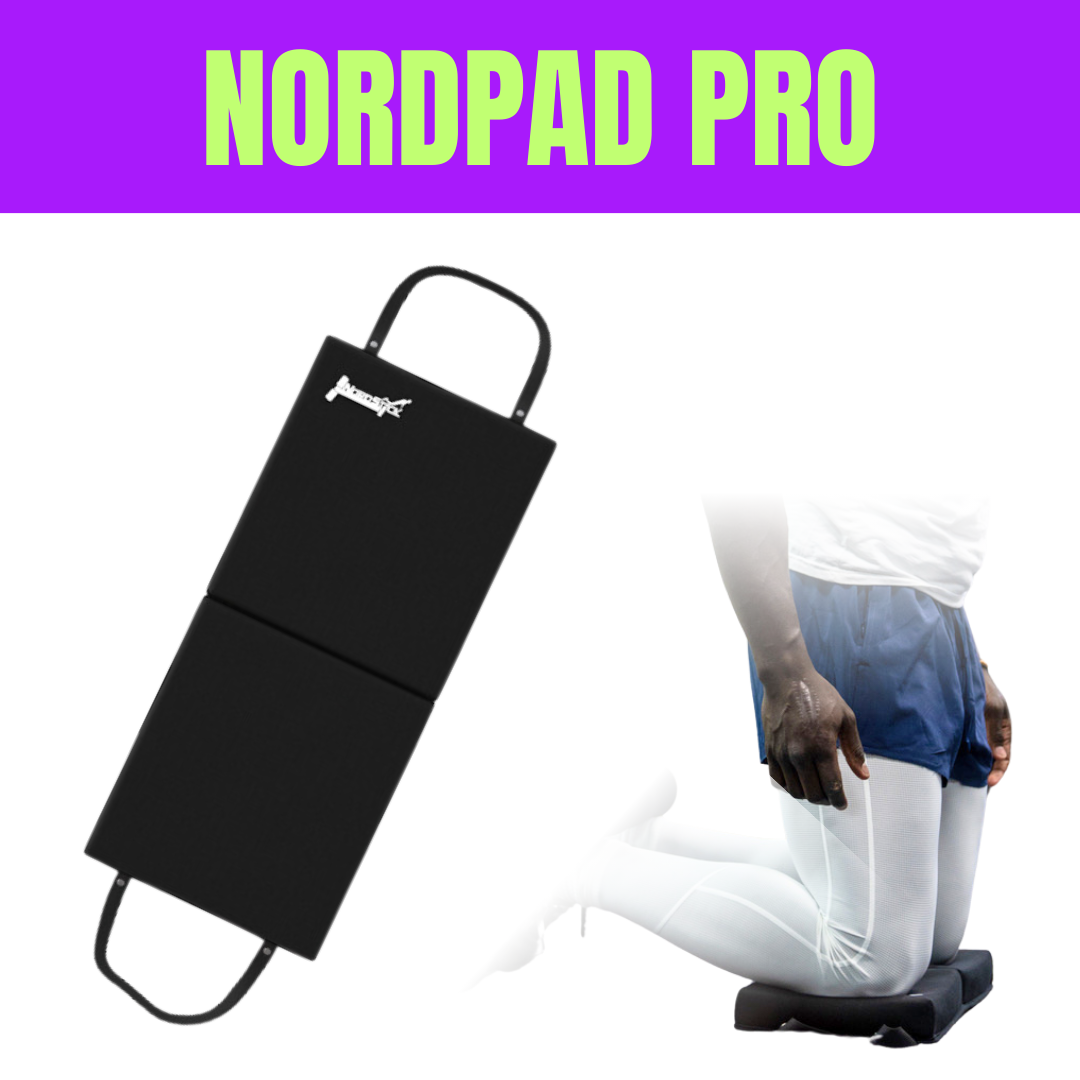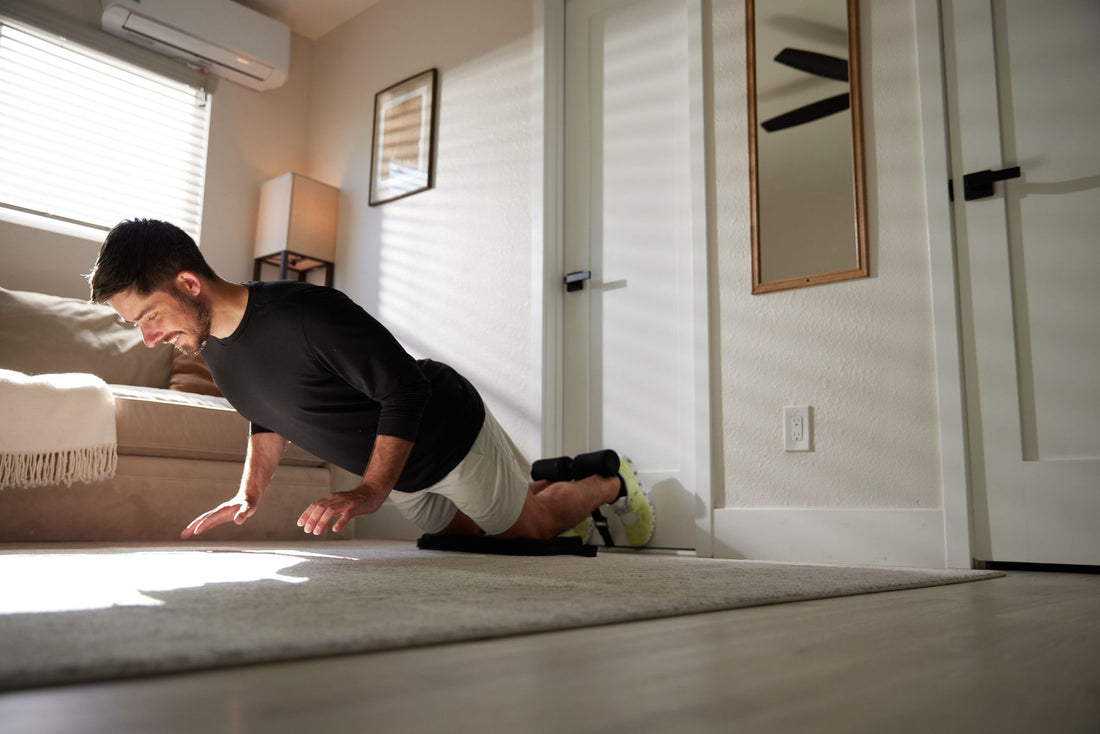The Nordic curl, also known as the Nordic hamstring curl, is a superb leg exercise for enhancing hamstring and glute strength but is notorious for its difficulty, especially for beginners. This challenging exercise can be daunting due to the strength required to perform it properly. However, with the right modifications and tools, such as the Nordstick and OmniBands, beginners can gradually build up their strength and confidence in performing Nordic curls. Here are five ways to ease into this potent exercise, ensuring comfort with a NordPad or cushion and progressively challenging your muscles.
1. Isometric Holds
Isometric holds are a fantastic way to start with Nordic curls because they allow you to engage the hamstring muscles without performing the full movement.
-
How to Do It:
-
Secure your feet with the Nordstick, ensuring a tight fit.
-
Slowly lower yourself until you feel your hamstrings engage.
-
Hold this position for a few seconds before returning to the starting position.
-
Repeat this for 2 sets of 3-5 reps.
-
This method helps in strengthening the hamstrings and knee joints gradually, preparing them for more dynamic movements.

2. Yoga Ball Walk Out
Integrating a yoga ball into your Nordic hamstring curls helps support your weight as you learn the movement pattern.
-
How to Do It:
-
Secure your feet under the Nordstick.
-
Start in a tall kneeling position and place the yoga ball in front of you.
-
As you lower your body, roll forward on the ball to your targeted depth, then use your hamstrings to pull back to the starting position.
-
Aim for 2 sets of 3-5 reps.
-
This variation not only supports the weight of your fall but also enhances the eccentric phase of the movement, important for building muscle strength and control.

3. Use 2 Bands on Your OmniBands
OmniBands provide adjustable resistance, making them ideal for easing into the more complex movements of Nordic hamstring curls.
-
How to Do It:
-
Set up your OmniBands with two bands for optimal support.
-
Secure your feet with the Nordstick.
-
Perform the Nordic curl with the resistance bands assisting your ascent and descent, minimizing the load on your hamstrings.
-
This setup helps maintain proper form and reduces the risk of hamstring injuries.
-

4. Use 1 Band on Your OmniBands
As your strength improves, reduce the assistance by using only one band on your OmniBands.
-
How to Do It:
-
Adjust the OmniBands to have only one band.
-
Perform the exercise as usual, with less support, challenging your hamstrings further as they build strength and endurance.
-
5. Eccentric Focus to Target
Focusing on the eccentric phase of the Nordic curl maximizes hamstring engagement and strength gains.
-
How to Do It:
-
Secure your feet and add a NordPad for comfort.
-
Slowly lower yourself, taking more than 3 seconds to reach your target distance, focusing on the lowering portion.
-
This technique helps in developing eccentric strength, which is crucial for both athletic performance and injury prevention.
-
Functional Benefits of Nordic Curls
Nordic hamstring curls are not just about building muscle; they play a crucial role in injury prevention, particularly in reducing the risk of hamstring strains. This exercise effectively strengthens the biceps femoris, a major muscle group that supports knee flexion and hip extension. By enhancing the eccentric muscle contraction capability of the hamstrings, Nordic curls improve overall lower body power and stability, essential for various sports performances and daily activities.
Addressing Common Questions
-
What does the Nordic ham curl work? The Nordic curl primarily targets the hamstring muscles across the back of the thighs, crucial for knee flexion and hip extension.
-
Are Nordic curls good for your knees? Yes, when performed correctly, Nordic curls can strengthen the muscles around the knee joint, leading to improved stability and a lower risk of injuries.
-
How many times a week should you do Nordic curls? For beginners, starting with 1-2 sessions per week allows the muscles to adapt to the new training stimulus while preventing overtraining.
Tips for Success
To maximize the effectiveness of your Nordic curl routine, remember to incorporate other factors such as a balanced diet, adequate rest, and regular full-body workouts. Consistency is key, as is listening to your body to avoid overexertion.
Conclusion
Nordic curls are a serious strength training tool for your lower body and posterior chain. Starting with these beginner-friendly variations will help you build up to the standard Nordic curl without the risk of injury and with maximal gains. Whether you're incorporating them into your leg day routine or looking for a targeted hamstring workout, these modifications ensure you can start strengthening your hamstrings effectively from day one. Keep at it, and soon, the most challenging portion of the Nordic curl will become a rewarding part of your fitness journey.


